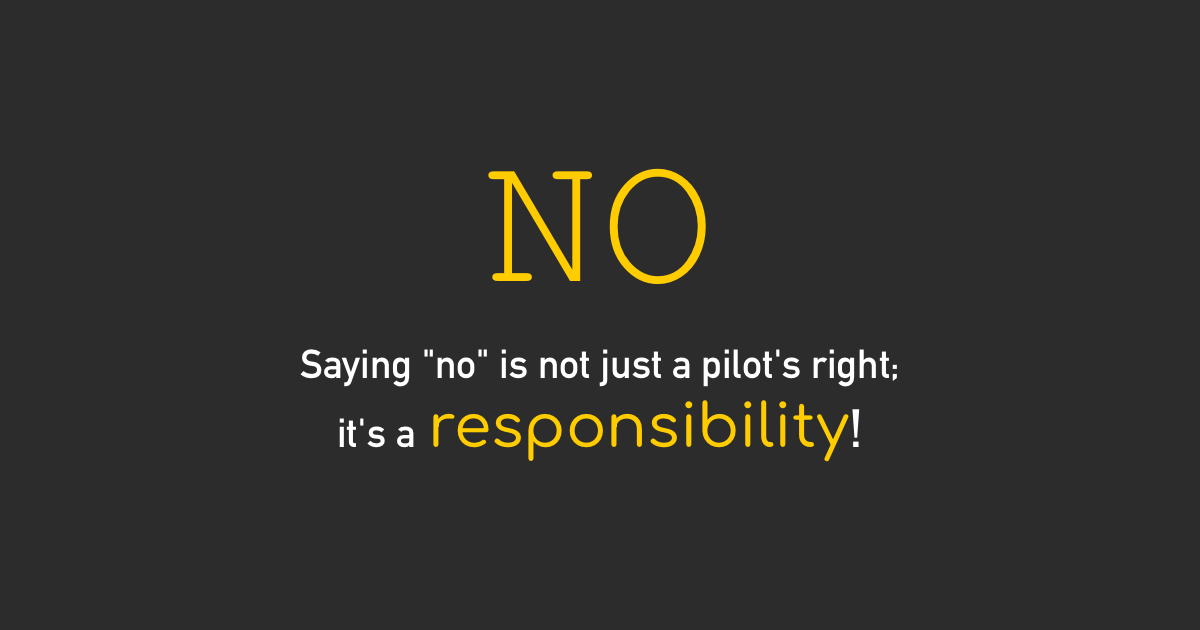
One of the most significant responsibilities any aviation professional has is the ability (and obligation) to say “no” when situations are not favorable.
Weather Conditions: Poor visibility, thunderstorms, icing, strong winds, and turbulence can pose severe threats to aircraft. Pilots have protocols to address and evaluate weather risks. Sometimes, there’s pressure to “push through”. However, the primary consideration should always be safety. Saying “no” to flying in adverse weather is not just a pilot’s right; it’s a responsibility.
Performance limitations: Overloading an aircraft or exceeding limitations can have disastrous consequences. Aircraft performance, handling characteristics, and safety margins can be severely affected. Commercial pressures might drive decisions to overloading an aircraft, but it’s essential to resist these temptations. Violating weight or performance limitations can lead to catastrophic results.
Bending Procedures: Every so often, we hear stories of pilots “bending” or sidestepping procedures, either because they’ve done it many times without any issues or because they’re under pressure. Consistent disregard for standard procedures can lead to safety issues and mishaps.
Violating Regulations: Aviation regulations exist for a reason – safety. While there might be instances where regulations seem cumbersome or time-consuming, they have been developed based on vast amounts of research, data, and past accidents. The pressure to cut corners can be high, especially in competitive environments. But one must remember that violating regulations not only compromises safety but can also result in severe penalties and liabilities of the pilot as well as of the owner and operator.
Crew Fatigue: Fatigue can significantly impair judgment, reaction times, and the ability to process information. Pilots have been identified as contributing factors in numerous accidents worldwide. Again, the power to say “no” when too tired to function safely is vital.
A pilot undergoes rigorous training to acquire the skills and knowledge necessary to operate an aircraft safely. They are trained to make decisions based on the current circumstances, their training, and the regulations. Passengers and even more aircraft owners should respect and trust their pilot’s professional judgement. The Pilot in Command (PIC) has the final authority over the operation and safety of the flight. This responsibility is enshrined in regulations to ensure that the person flying the aircraft can make decisions without undue pressure or interference. When the pilot in command says “no” there is no room for debate as this is for ensuring the safety of passengers, crew, people on the ground and should be respected without any further discussion.
As the captain of an aircraft, you hold the ultimate responsibility for the safety and well-being of everyone on board, as well as for the aircraft itself. Your judgment and decision-making should NEVER be based on external pressures. If you find yourself in a situation where you cannot meet a request or requirement, regardless of the source of the request, don’t hesitate to use the phrase “Unable to comply”.
For aircraft owners, operators, and others who might employ or work with pilots, it’s important to have trust in a pilot’s judgment. If a pilot seems to always agree without hesitation it could indicate a lack of proper risk assessment or an unwillingness to stand up for safety.
There may be financial, business, or personal reasons for wanting to proceed with a flight, but if you, as the captain, believe it is unsafe or unwise to do so, it is your professional responsibility to say “no.” Saying “no” in aviation is not a sign of weakness; rather, it’s a demonstration of strength and professionalism.